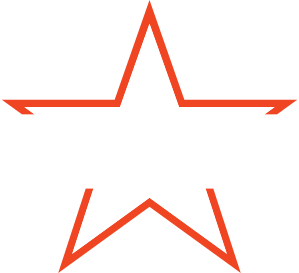The Bare Essentials of Understanding Stucco Coating Systems
Stucco usually is found on buildings in 2 different configurations, EFIS or Foam-backed Stucco with a stucco aggregate applied over nylon mesh or hard coat stucco which is more plywood base with a stucco aggregate placed over a wire mesh. Either method in consideration, the following conditions can cause cracking or failure to the Stucco aggregate: 1) If there is a compromised installation with cold temperatures where the aggregate can’t cure properly. 2) Improper securing of the foam, mesh, or plywood bases. 3) Improper egress or distance of the base of Stucco to ground. 4) Improper expansion joints not installed. 5) Improper installation or lack thereof kick out plates to funnel water away from areas where infiltration would not be wanted behind the stucco. 6) Movement of soil or structure.
Once these cracks are present they MUST be attended to or they will worsen and the overall condition of the building will continue to deteriorate. Cracking to Stucco, with the exception of a little spider cracking to corners of windows, is not normal and should not be ignored. Do not heed or listen to claims that it allows the building to breathe easier or that this “Typical” for stucco and not something to worry about. Unattended, these cracks will only get worse as water enters, and a Freeze/thaw cycle sets in and opens them further. The more these cracks open, the greater prospect there is of the inability of bridging them with a specialty coating. Once this happens, you might be left with almost no other option other than re-finishing the area corner to corner with stucco finish which will always be more expensive. Caulking these cracks with standard acrylic or even elastomeric caulk will cause them to flash thru a coating or applying a stucco patch to them will result in the same, a veined out appearance thru the coating. Some specialty stucco patch caulk products can be brushed or worked into the cracks with ea. side of the crack taped but with varied results as best. The best way to attend to cracks to stucco is to apply a quality elastomeric coating that will bridge or fill the cracks and arrest them for opening further.
Elastomeric Coatings are designed to expand and contract over the stucco surface, fill & bridge cracks, resist staining, repel water, UV and become a Vapor permeable barrier to the weather. This means the coating allows the building to breathe but does not allow moisture in behind it. Claims that elastomeric coatings trap moisture and that stains can be power washed off stucco are absurd and should be disregarded. Stated simply, the wrong specification for stucco is straight 100% Acrylic Paint as it will function to not do bridge cracking or resist staining. Cracks will always re-appear with standard 100% Acrylic Paint and will definitely not serve to resist water like an elastomeric. If there is no cracking, significant staining, or significant waterproofing desired then 100% Acrylics are OK. Be careful, some elastomeric coatings are more like paint. The true quality of an Elastomeric Coating is based on what is called “Tensile Strength” or its ability to stretch and then have superior memory to move back to its original state along with the level of water and stain resistance that it offers. It should be noted, that while most quality Elastomeric Coatings can fill “Hairline” cracks so that they are not really visible, many patterned or borderline larger cracks that were bridged or filled may still appear to the eye. Again, reiterating the need to attend to this condition as soon as you are able to accomplish a better overall cosmetic appearance to the building. Keep in mind that because of the elastomeric nature of these coatings, they are very thick, often only 125 Sq. ft. per gal vs. 250-300 sq. ft. with conventional paint, and more will need to be applied with a back roll into the cracks. If a crack cannot be bridged, then management must make a decision to caulk the crack which will “Vein out” and be more visible under the Coating or Re-finish that particular area corner to corner with stucco finish.
Something to understand clearly, stucco is the hardest finish to match or touch up. It changes colors to ea elevation and even from end to end. The differential in texture profile and light reflective value will challenge even the best of color matches. Do not try this. It is a waste of time. These areas must be repaired if need be for Damage like grommet/sign Holes, delamination due to weather, etc. & coated corner to corner with preferably the Elastomeric Coating. In addition, Windows to Stucco should all be clear caulked to stop further delamination of the stucco from around the window and/or as mentioned above spider cracking to the corners. Understanding what to do with a weathered, stained, and cracking* stucco structure can be challenging and expensive especially with so many different opinions and coating options be touted as solutions. As stucco coating specialists, we at Stellar hope this has been helpful and we can be of further assistance to those in need of the right investment to properly protect their stucco properties.
Serving the Areas of Denver, Boulder, Highlands Ranch, Lone Tree, Centennial, Littleton, Lakewood, Greenwood Village, Parker, Cherry Creek, Arvada, Golden, Westminster, Thornton, Northglenn, Castle Rock, Longmont, Englewood, Aurora, Cherry Hills Village
Address: 1500 W Hampden Ave Suite 1C, Englewood, CO 80110
Phone Number: (720) 981 7827
